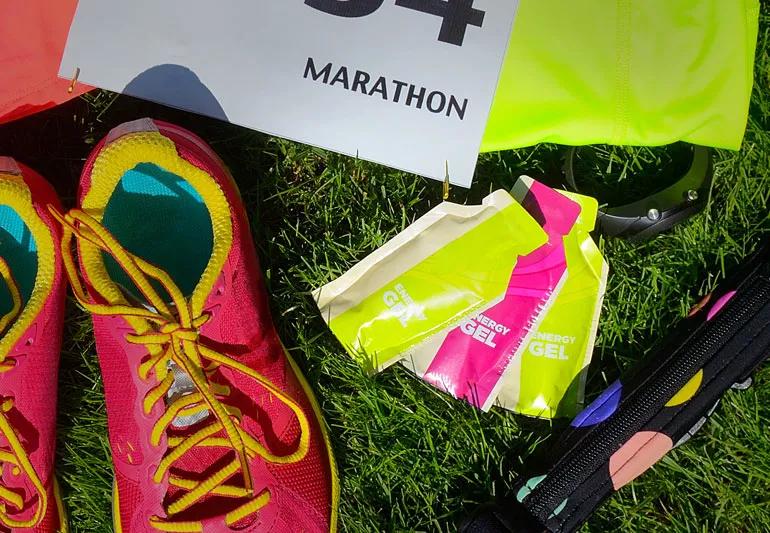Expert advice to help you get the most from your training time

If you’re a long-distance runner, cyclist or any kind of endurance athlete, you may have heard about energy gels or have considered adding them to your nutrition strategy.
Advertisement
Cleveland Clinic is a non-profit academic medical center. Advertising on our site helps support our mission. We do not endorse non-Cleveland Clinic products or services. Policy
But what are these products and what’s the best way to use them? Dietitian Katherine Patton, MEd, RD, CSSD, LD explains.
A: Energy gels are carbohydrate-rich gels that provide energy for exercise. They’re for use by adults and are made from a blend of sugars, most often maltodextrin and fructose.
Most energy gels come in 1-ounce or 1.5-ounce packets, which makes them convenient to consume during a long-distance event. Most energy gels have no fat, fiber or protein – so your body digests them quickly.
A: Runners, swimmers, cyclists or anyone who exercises for more than 60 minutes needs to adequately fuel their body for the best workout. This is important because while you exercise, your body draws on carbohydrates stored in your muscles. However, the available amount is limited.
Research shows consuming carbohydrates during exercise that lasts longer than an hour improves metabolic response and athletic performance and prevents glycogen depletion.
The American College of Sports Medicine recommends consuming 30 grams to 60 grams of carbohydrates per hour of exercise. Most energy gels pack 23 grams to 27 grams of carbohydrates while an 8-ounce sports drink only provides 14 grams of carbohydrates.
Advertisement
Energy gels are simple to consume, not filling and easily digestible. Using gels can help you maintain your energy level and prevent fatigue during intense or prolonged periods of exercise.
A: Energy gels contain a concentrated amount of sugar, so taking them too quickly could cause an upset stomach. To prevent this, wash down your energy gel with sips of water.
Though energy gels provide needed fuel, remember that what works for one athlete might not work for another. Each runner absorbs and processes carbohydrates at a different rate. One person might feel the effect within three minutes, while others might take up to 15 minutes.
Also keep in mind that if you’re an endurance athlete training for competition, you need to devise a fueling strategy and incorporate it into your training regimen before race day.
So eat gels while you’re training and consume them at intervals similar to your plans for the race. Your body will learn to keep the digestive track active while you’re running and you’ll digest the gels more readily.
Plan a fueling strategy and practice it during long training sessions to determine what works best for you. Good training, proper fueling and adequate hydration provides the foundation for achieving your personal best.
Advertisement
Learn more about our editorial process.
Advertisement

You can improve your athletic performance over time by breaking up your workout regimen into focused cycles

Lower-intensity workouts can deliver high-quality health and fitness results

Incremental changes in your exercise routine can improve your strength and endurance over time

Understanding heart rate zones can help you tailor your workout to reach your goals

Increase the size of your muscles by bulking up on protein and focusing on slow, intense movements with progressive overloading

Low-impact exercises help you recover faster between sets, during cool downs and on rest days

Eccentric is slow and steady, while concentric is fast and controlled

Weightlifting can help you build muscle mass, reduce joint pain and increase flexibility to improve your quality of life

Start having sex about 72 hours before ovulation, then at least every other day during your fertile window

Attachment theory suggests that your earliest relationships shape connections throughout your life

It isn’t a recognized mental health disorder, but research shows that problematic social media use can negatively affect your mental health, self-esteem and sleep